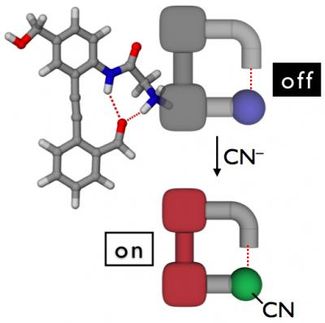Sounding out Congo Red
Ultrasound can drain the color from toxic dyes
Brightly colored dyes such as the shimmering Congo Red commonly used in silk clothing manufacture are notoriously difficult to dispose of in an environmentally benign way. Congo Red is an azo dye, it is toxic to many organisms and is a suspected carcinogen and mutagen. To give it its full name it is the disodium salt of 3,3'-(1E,1'E)-biphenyl-4,4'-diylbis(diazene-2,1-diyl)bis(4-aminonaphthalene-1-sulfonate). It is a benzidine-based anionic disazo dye. Benzidine and Congo Red are, however, banned in many countries because of health concerns. But, it is still widely used in several countries.
Apparently it is used not only to dye silk a gorgeous red, but cleverly adds a second shimmering color and rending the red silk shot through with yellow. It also represents a significant effluent problem along with related dyes from textiles, printing and dyeing, paper, rubber, and plastic industries. Its structural stability makes it highly resistant to biodegradation, and obviously its bright color and toxicity are entirely undesirable in the environment.
Writing in the International Journal of Environment and Waste Management (2008, 2, 309-319), Srinivas Sistla and Suresh Chintalapati, from Hyderabad, India, explain a new approach to degrading Congo Red based on ultrasound.
The researchers point out that advanced oxidation processes (AOP) are currently being developed for remediation of contaminated effluent because they generate no hazardous sludge. Oxidative degradation is based on free radical attack using powerful oxidants. However, Sistla and Chintalapati suggest that sonolysis, break down of an organic compound with ultrasound, has so far been investigated only rarely as an alternative remediation technology. Under well-established 'extreme' conditions, materials irradiated with sound at frequencies around 50 kHz are essentially ripped apart by the formation of free radicals, say the researchers. Carbon dioxide and water are the usual products, although with the case of azo dyes, nitrogen would also feature in the byproducts.
Sonication of Congo Red in the aqueous phase with 50 kHz ultrasound transforms it into a milieu of less toxic intermediates that can then be broken down still further by conventional industrial waste water biodegradation treatment. As a proof of principle, the researchers suggest that the combination of ultrasound and biodegradation could allow the color to be removed from dye-contaminated industrial effluent effectively and the toxicity reduced to negligible levels. "The results obtained from this study revealed the ability of ultrasonic irradiation to transform the aromatic inhibitory compounds to less toxic intermediates, which can be further utilized in aerobic/anaerobic oxidation," the researchers conclude.
Topics
Organizations
Other news from the department science

Get the analytics and lab tech industry in your inbox
By submitting this form you agree that LUMITOS AG will send you the newsletter(s) selected above by email. Your data will not be passed on to third parties. Your data will be stored and processed in accordance with our data protection regulations. LUMITOS may contact you by email for the purpose of advertising or market and opinion surveys. You can revoke your consent at any time without giving reasons to LUMITOS AG, Ernst-Augustin-Str. 2, 12489 Berlin, Germany or by e-mail at revoke@lumitos.com with effect for the future. In addition, each email contains a link to unsubscribe from the corresponding newsletter.























































